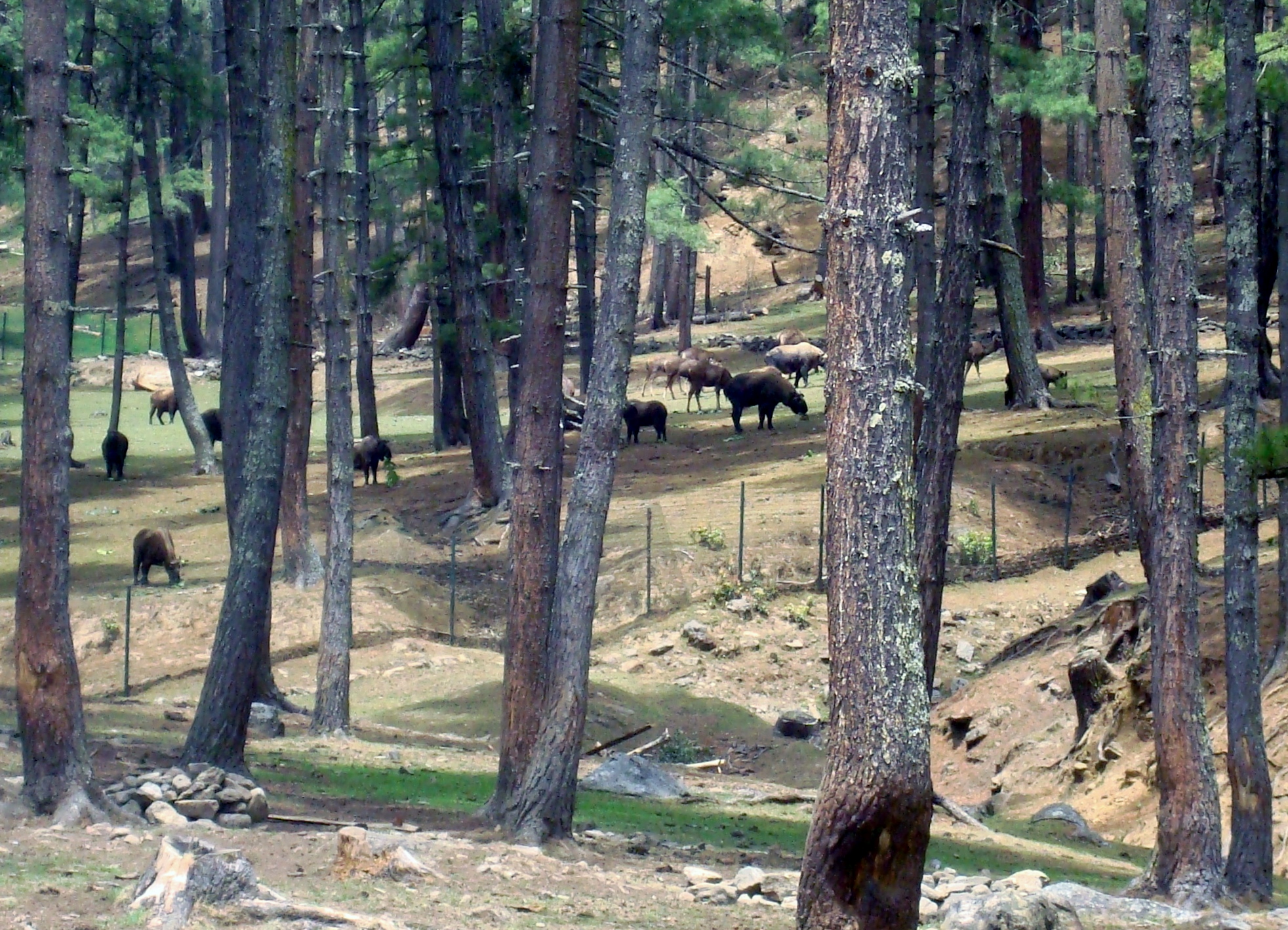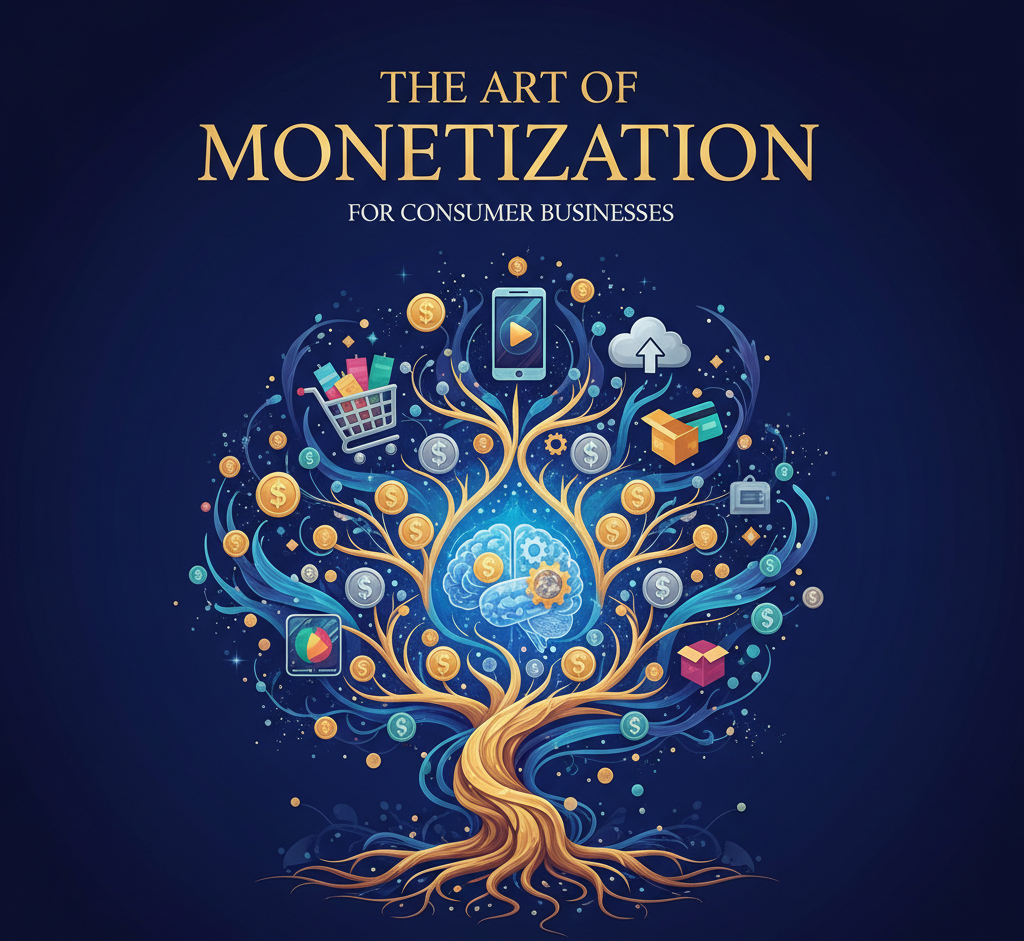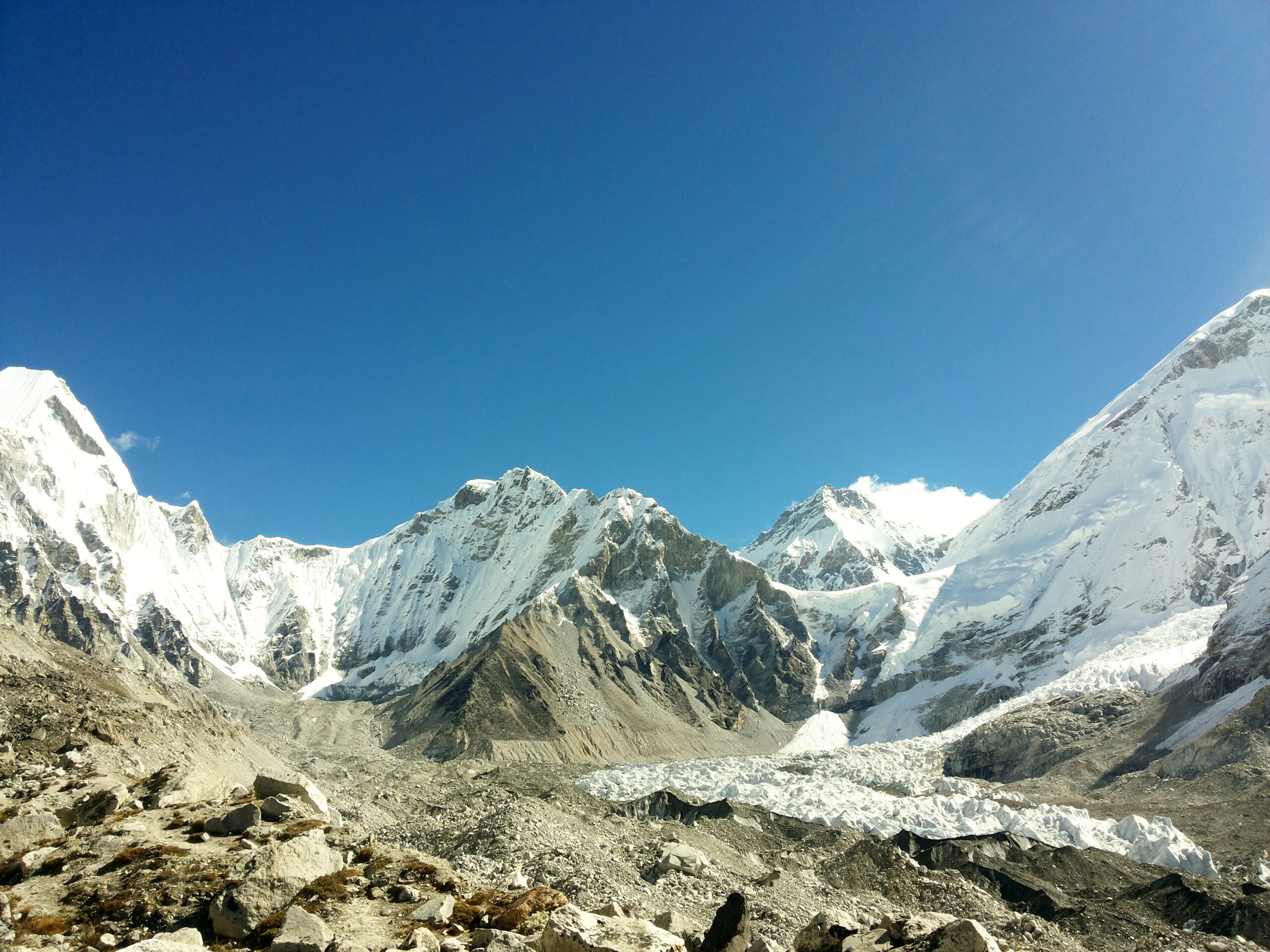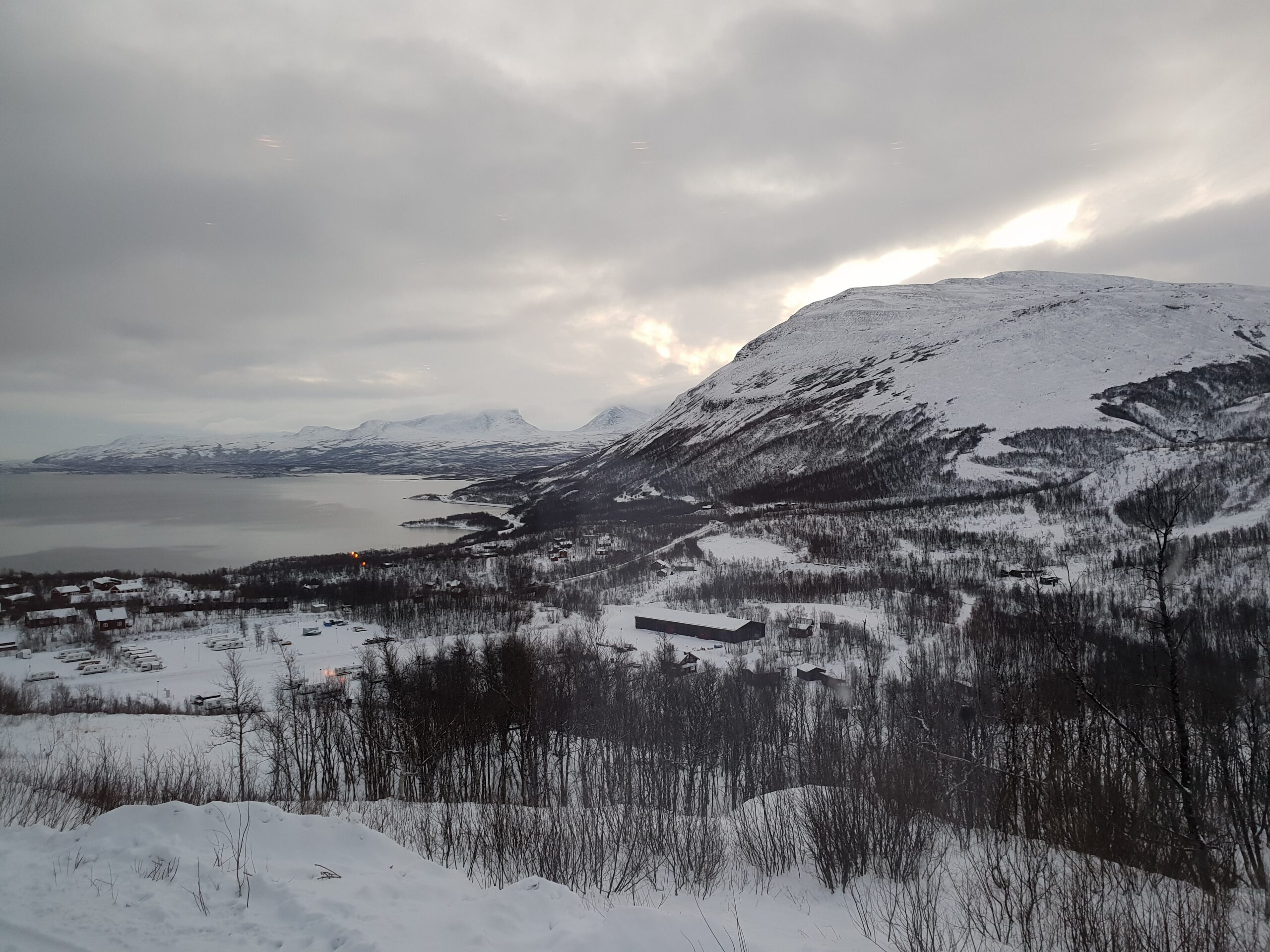Day 2: Thimpu
I woke up to a beautiful sunny Tuesday morning. A hearty buffet breakfast is always the best way to start the morning. And I was always one of those who never missed a meal! And after enjoying my mandatory morning Cappuccino, I was all set to explore Thimpu. I met my guide Jigme in the morning and we were headed to Takin zoo; Takin is the national animal of Bhutan and is a cross between a goat and a cow. As per Bhutanese legend the animal was created by a Bhutanese yogi Drukpa Kunley, also called as “The Divine Madman”, when requested by the people to Bhutan to showcase a miracle to them. This is also the reason why Takin was adopted as the national animal in 2005. We spotted several Takin grazing amidst the trees in the zoo; it was indeed a unique creature, slightly bigger than a goat with a body more like a cow and the face of a goat. It has short legs, a deep chest and a stocky body. There are 4 species of Takin found in the eastern Himalayan region and they are an endangered species.
Next we headed to the Zorig Chusum which is the school for various forms of art. The literal translation of the name means ‘Thirteen crafts’. It was interesting to see the students at work practicing various art forms such as painting, sculpture, carving and others. There were various levels for each of these art forms. The place also housed a show room where one could buy paintings, sculpture and ethnic dresses. I quickly picked up a painting.
The next place was the national library where the largest book in the world – 5 feet by 7 feet is displayed. It’s a collection of photographs on Bhutan. The library also housed several ancient texts in Dzongkha script. Interestingly, most Bhutanese cannot read the Dzongkha script any more.
It was time for lunch. I decided to head back to the hotel but wanted to explore the city on foot. I asked Jigme for recommendations on Bhutanese restaurants and told him I would meet him at the clock tower at half past two. I was keen to read books written by Bhutanese authors and one author who caught my attention was Kunzang Choden. Several of her stories have been translated into different languages and she is one of the most prolific authors in Bhutan. I had read about her in the inflight magazine on the Druk air flight from Kolkata to Paro. The first bookshop that I went to did not stock any of her books and I was very disappointed. I decided I will find a bookshop and pick up one or two of her works before I leave Bhutan. Reading books by local authors is always a great way to get to know about the people and culture of a country. I also wanted to try Ara, the local drink of the Bhutanese brewed from rice, maize, millet or wheat. It is commonly made from rice or maize at homes or farms. On one of my earlier travels to Sikkim I had tried Chang, a drink brewed in bamboo containers from maize. The version I had tried was fermented and had a nice grainy flavor to it. I was hoping to find Ara in the fermented rather than the distilled version. I walked towards the clock tower area and spotted ‘Bhutanese’, one of the two restaurants that Jigme had recommended. I walked in and the lady who seated me checked twice if I was going to be alone. The restaurant did not have a menu card but had a certain number of dishes already prepared for lunch. I decided to have red rice, Jasha Po which is chicken in a red chilly based gravy and Ema Datsi which is green chilli cooked in cheese. It was a Tuesday and I was wondering if I could get Ara at all (Tuesdays are dry days in Bhutan) but to my surprise the waitress presented the liquor menu and I jumped to check if Ara was available. An affirmative answer got me excited. The food was served in less than ten minutes along with the Ara, this was the distilled version though, a tad disappointed that I did not get the fermented version but was happy I was atleast trying Ara. The chicken was tasty and the Ema Datsi was very spicy even for my Indian palette. I enjoyed the meal and chatted up with the owner of the restaurant who stated that she owned an Indian restaurant as well. She also asked me where I was from; she had traveled to India and was excited to Know that I was from Bangalore in India.
I walked around the clock tower area and found another book shop. The owner knew who Kunzang was and quickly handed me three of her latest titles. I picked up ‘The Circle of Karma’, a book about a young woman who having lost her mother has to make a long journey alone. I explored a couple of souvenir shops and reached the clock tower.
The next point was the textile museum; it was established in 2001 and has a large collection on antique textiles and weaves from different parts of Bhutan. It has separate sections focused on textile arts, roles of textile in religion, various indigenous fibers, royal collection and textiles based on warp and weft patterns. I also found some interesting jewelry and other accessories that go with the Gho and Kira, the traditional dress worn by the Bhutanese men and women. Apart from silk threads and cotton, yak hair is also used for weaving textiles in the colder regions of the country.
The next point was the Semtokha Dzong which was built in 1627 by Zhabdrung Ngawang Namgyal, also called as “The Unifier”. It is one of the first structures based on the Dzong architecture and is designed as a fortress for military defense as well as religious functions. Infact, ‘Semtokha’ means, ‘Atop a demon’; legend has it that a demon that was troubling travelers in the region had to be subdued before the Dzong could be built. The Dzong houses several statues and paintings of Buddha, manifestations of Guru Rinpoche, God of compassion and so on. The main shrine was again a very peaceful place. Incidentally prior to Buddhism, a religion called Bonism was practiced in Tibet, Bhutan and the Himalayan region and the great Guru Padmasambhava brought in tantric Buddhism as the first step to unite the people, which was later supplanted by Buddhism. There is a small restricted area within the Dzong dedicated to the medieval form of the religion based on Bonism practiced in Bhutan. That marked the end of the tour itinerary for the day.
I decided to walk around in the area near the hotel and visited the crafts bazaar. It had over 100 shops selling various artifacts, there were textiles, wood carvings, paintings, handmade paper, masks of various kinds and several other souvenirs. I guess I have a weakness for artifacts and picked up several of them! One does need to negotiate on prices in this bazaar though.
Back in my hotel room, I found a Kira with a bright purple jacket and a lavender colored skirt. I instantly knew I was expected to wear it for the evening performance. I had seen a video of how to wear the Kira, earlier in the day at the textile museum and it seemed to be fairly complex. For a long while, I was wondering how I was going to pull this off and was almost going to call guest services at the hotel, when I realised that the long skirt that needed to be worn was actual a stitched skirt and not the long rectangular piece of cloth that needs to be tied in a certain way. That made the job simple! I was dressed in a jiffy and got to the courtyard to watch the dance and music performances for the evening. It was dinner time and I was getting ready to experience more Bhutanese fare but to my surprise there was an Indian and Continental buffet set up! As usual the food was great and I chatted up with the manager of the restaurant for a while before calling it a day. I was excited about our plans of visiting Punakha the next day.
To be continued…














Leave a Reply